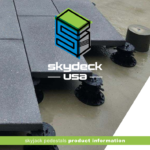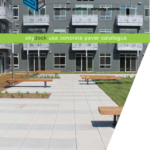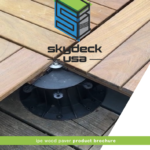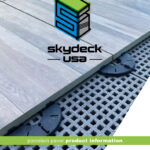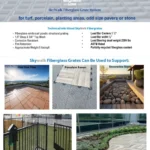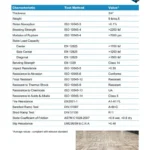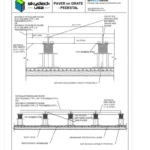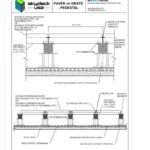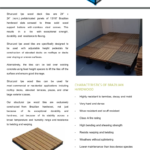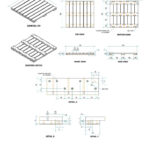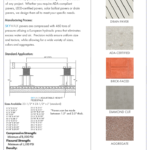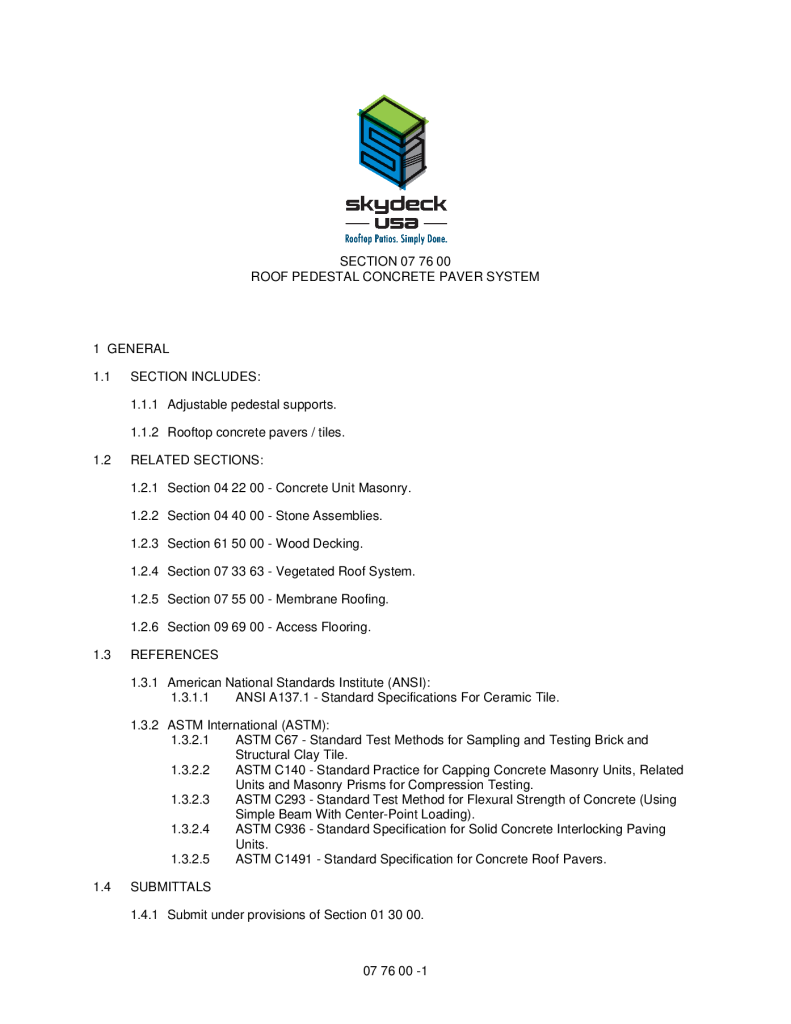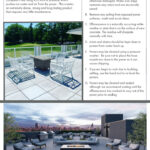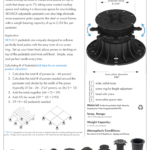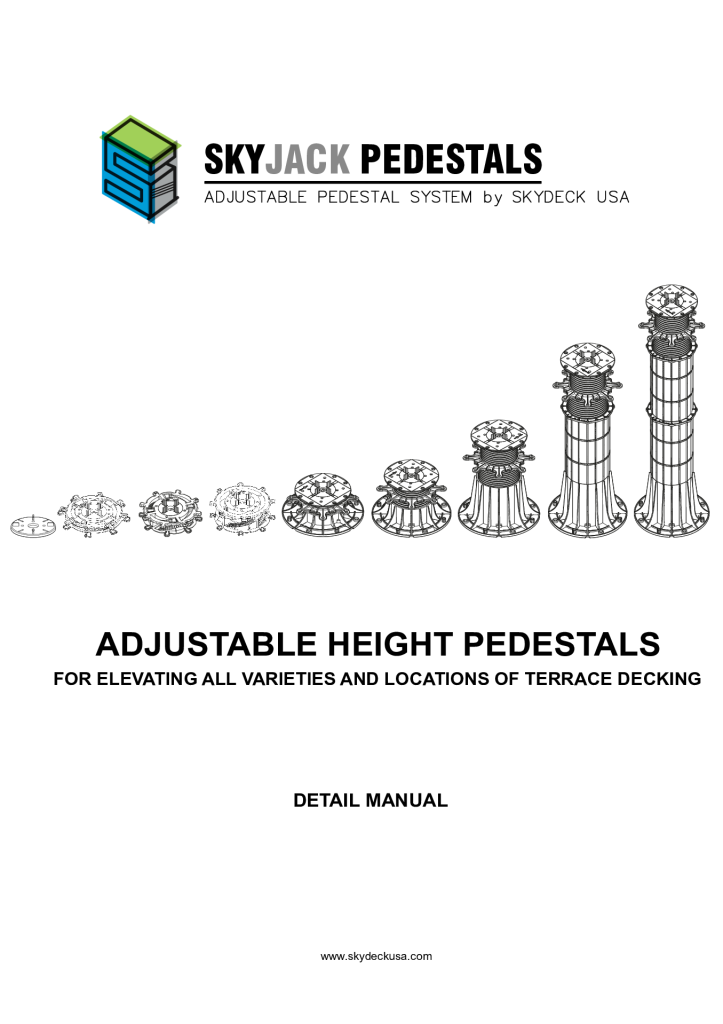Read Time: 9 minutes
Introduction: Why Rooftop Patios are in High Demand?
From restaurants to apartment buildings, lakefront to mountaintop homes, offices to hospitals, it seems that rooftop patios are a must have amenity. Whether you’re an architect, general contractor, landscaper, roofer, paver specialty contractor, handyman or woman or homeowner, it’s important to know how much they cost. So, how much money should you plan to spend on a rooftop deck in 2025? Let’s take a look at what goes into the price, specifically flooring products and installation variables.
Why Don’t Suppliers Advertise Rooftop Patio Costs Online?
Most suppliers don’t advertise pricing because there are many variables that influence the final cost. First, there are several flooring options available for roof terraces. These include concrete pavers, porcelain pavers, Ipe wood deck tiles, turf and rubber pavers. Each has pros and cons and come with a different price tag. To find the right flooring material for your project, refer to our article “Compare Rooftop Patio Pavers: Pros and Cons of Each Material” That guide will walk you through the various considerations you will need to make to find the right flooring for your project.
Key Factors Influencing Rooftop Patio Cost
- Pedestal Height – Pedestals under 14 inches are generally more affordable. The price jumps significantly with pedestals over 21” as most manufacturer’s start to require additional bracing at that height.
- Patio Size – Larger projects are less expensive per square foot. Due to both volume discounts and freight costs, smaller projects cost more on a square foot basis than large projects. We see the first substantial dip in pricing at about 4,000 sq ft. You should also expect to pay more for labor on smaller jobs. In larger cities like Chicago or Los Angeles, installers carry a price tag of up to $25-35 per sq ft for small jobs while projects over 4,000 sq ft would be closer to $10-20.
- Patio Shape – Patios that are square or rectangular are typically the most cost effective by requiring fewer cut pavers than irregular shapes. This minimizes waste of materials and labor costs.
- Paver Sizes – Most pavers are 2 feet by 2 feet because pedestals can usually hold up to 24 inches. If you use pavers that are smaller or shaped differently, you’ll need more pedestals to support them. That means you’ll spend more on both materials and the work it takes to install them.
- Wind Uplift Requirements – If you live in a windy area with codes regarding wind uplift, the cost of your patio materials can be as much as double, especially in hurricane zones. Labor will also cost more due to extra work required to install the additional materials for a wind uplift system.
- Fall Protection – Porcelain roof pavers are becoming a popular option although they have hidden costs that many buyers often overlook. Since porcelain is more prone to cracking than other rooftop paver materials, most manufacturers require a fall protection grate underneath the pavers. These grates are usually required with pedestals 4” or taller and prevent anyone from falling through a paver if it were to crack. These systems are very expensive and typically double the cost of a porcelain paver roof terrace.
- Roof Access – If you have a crane or lull already at the jobsite, unloading the materials and uploading them to the roof is faster and easier for the installer. If the installer has to rent a crane, you will want to factor that into your cost. Smaller projects can be labor-intensive, requiring laborers to break down pallets and carry them to the roof. This is back-breaking, difficult work and will come with a higher price tag.
- Delivery Costs – Extra delivery services usually cost more. For example, if you don’t have a forklift to take the materials off the truck, you’ll need a special truck with a liftgate, which takes longer and costs extra. If you want the shipping company to call you to set up a delivery time, that also adds to the price. Other things that cost more include deliveries to homes, places without a loading dock, or if the driver needs to help unload the materials.
Material and Labor Cost Breakdown
While material pricing is more standard across the US, labor can vary significantly based on the size and location of the project. Most paver contractors prefer larger, commercial projects so homeowners may find it more difficult to find an experienced paver pedestal installer. But, here are some ballpark rooftop patio costs broken down by materials.
Materials: $8–$23/sq ft
Labor: $8–$18/sq ft
Standard 2’ x 2’ x 2” concrete pavers on pedestals that are 14” tall or less will cost anywhere from $8-23/sq ft depending on project size, paver color choice and pedestal height. Plan to spend an additional $10 or more per square foot if you need to add wind uplift support.
Labor costs for concrete pavers, Ipe and porcelain pavers that don’t require grates underneath will be between $8-18/sq ft depending on the complexity of the project and area of the country.
Materials: $12–$18/sq ft (pedestals ≤4″); $24–$36/sq ft (pedestals >4″ with grates)
Labor: $8–$18/sq ft
For standard 2’ x 2’ x ¾” porcelain pavers on pedestals 4” or shorter, you can expect to pay $12-18/sq ft. Anywhere pedestals over 4” are needed, then a grate or tray will be needed underneath the pavers, so the price jumps up to about $24-36/sq ft. Most fall protection systems also provide for wind uplift so the price in windy areas will be in that same ballpark.
Labor costs for concrete pavers, Ipe and porcelain pavers that don’t require grates underneath will be between $8-18/sq ft depending on the complexity of the project and area of the country. Porcelain pavers on grates will cost more due to the additional labor of securing the grates. You can plan on a budget of between $12-25/sq ft.
Wood Pavers on Pedestals (Ipe, Cumaru, etc.)
Materials: $14–$23/sq ft
Labor: $8–$18/sq ft
Ipe and Cumaru pavers typically come in 2’ x 2’ panels and some manufacturers offer a 2’ x 4’ option as well. Most systems include a hidden clip that pins the pavers down to the pedestals preventing the paver from sliding or blowing off the pedestals. For smaller projects, you can expect to pay $16-23/sq ft while larger projects may be in the range of $14-20/sq ft. Since most systems utilize the lock down system for wood pavers, the cost won’t increase for windier areas.
**Update – Ipe wood comes from Brazil. With recent 50% tariffs, the cost of Ipe wood is projected to rise significantly. If you are considering an Ipe deck, you may want to secure your wood soon to avoid substantial increases to your rooftop patio costs.
Labor costs for concrete pavers, Ipe and porcelain pavers that don’t require grates underneath will be between $8-18/sq ft depending on the complexity of the project and area of the country.
Materials: $13–$34/sq ft
Labor: $12–$25/sq ft
Paver pedestal manufacturers use two main methods for rooftop turf. Some offer 2’x2’ turf tiles adhered to trays set on pedestals, while others install grates first, then roll turf over them. Both allow adjustable height to match slopes and thresholds. Rooftop patio costs using turf range from $22–34/sq ft for small residential projects and $13–20/sq ft for larger ones.
Labor costs for turf pavers on grates are higher due to the additional labor of securing the grates. You can plan on a budget of between $12-25/sq ft.
Materials: $8–$38/sq ft
Labor: $8–$25/sq ft
Rubber interlocking pavers can be installed directly on top of the roofing membrane and slope with the roof or they can be installed on top of a grate system similar to turf. If you simply plan to lay rubber tiles directly on the roof, you can expect to pay between $8-18/sq ft depending on the color and quality of the materials you choose. If you plan to add grates and pedestals, the materials will cost around $22-38/sq ft.
Labor costs for rubber interlocking pavers installed directly on the roof will be between $8-12/sq ft depending on the complexity of the project and area of the country. Rubber pavers on grates will cost more due to the additional labor of securing the grates. You can plan on a budget of between $12-25/sq ft.
Plan to add $3–$10/sq ft for the following:
- Wind Uplift Support
- Pedestals over 21″: Additional bracing required
- Complex Designs: Increased labor and material waste
- Access Challenges: Potential need for cranes or manual transport
- Very large projects typically receive discounted materials from most suppliers
Conclusion: Plan Your Rooftop Deck Budget Smartly
The rooftop patio cost in 2025 depends on things like the materials you choose, how complicated the design is, and where you live. If you understand what affects the cost, it’s easier to plan your budget and make smart choices for your project.
FAQ’s: Rooftop Patio Cost in 2025
Q: What is the average cost per square foot for a rooftop patio?
A: Depending on materials and design, costs typically range from $16 to $65 per square foot including materials and labor.
Q: Do rooftop patios add value to a property?
A: Yes, they can add 30-100% ROI in residential resale value and 5-15% asset value uplift for commercial properties due to enhancing outdoor livability and appeal.
Q: Are there maintenance considerations for rooftop patios?
Yes — checking for rocking pavers and adjusting pedestal heights as the building settles will be required.
Material maintenance varies:
Turf: sweeping and washing
Concrete: occasional cleaning
Ipe wood: weeping and optional annual sealing
Porcelain: regular cleaning
Summary of Key Takeaways: What impacts rooftop patio costs?
- Rooftop patio pricing varies widely based on multiple factors, including pedestal height, patio size and shape, material selection, wind uplift compliance, and fall protection requirements.
- For smaller or residential projects under 3,500 sq ft, you should budget between $27–$65 per square foot for materials and labor in 2025.
- For larger or commercial rooftop patios, the cost typically ranges between $16–$50 per square foot, offering better value due to volume discounts and shipping.
- Labor costs fluctuate by region across the US.
- Choosing standard 2’x2’ pavers, minimizing custom cuts, and ensuring easy roof access can significantly lower your total project cost.
- Porcelain pavers and turf systems often have hidden costs due to fall protection grates or grate-mounted installation systems.
- Don’t forget to factor in delivery charges, crane rentals, and special handling when budgeting for your rooftop deck.
- A well-designed rooftop patio not only provides functional outdoor space but can also increase property value and market appeal.

